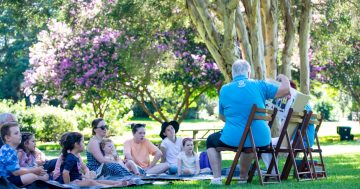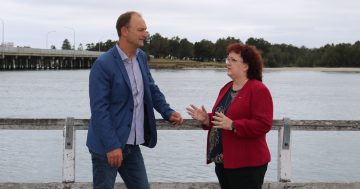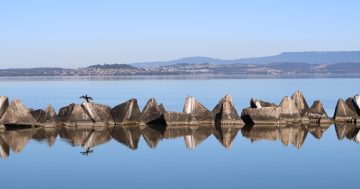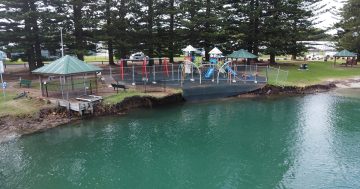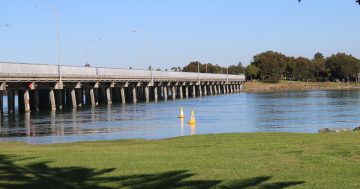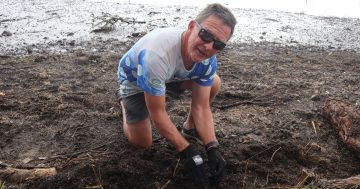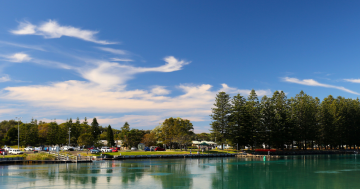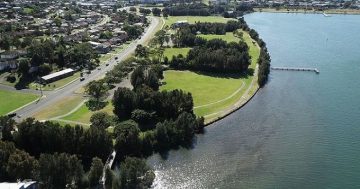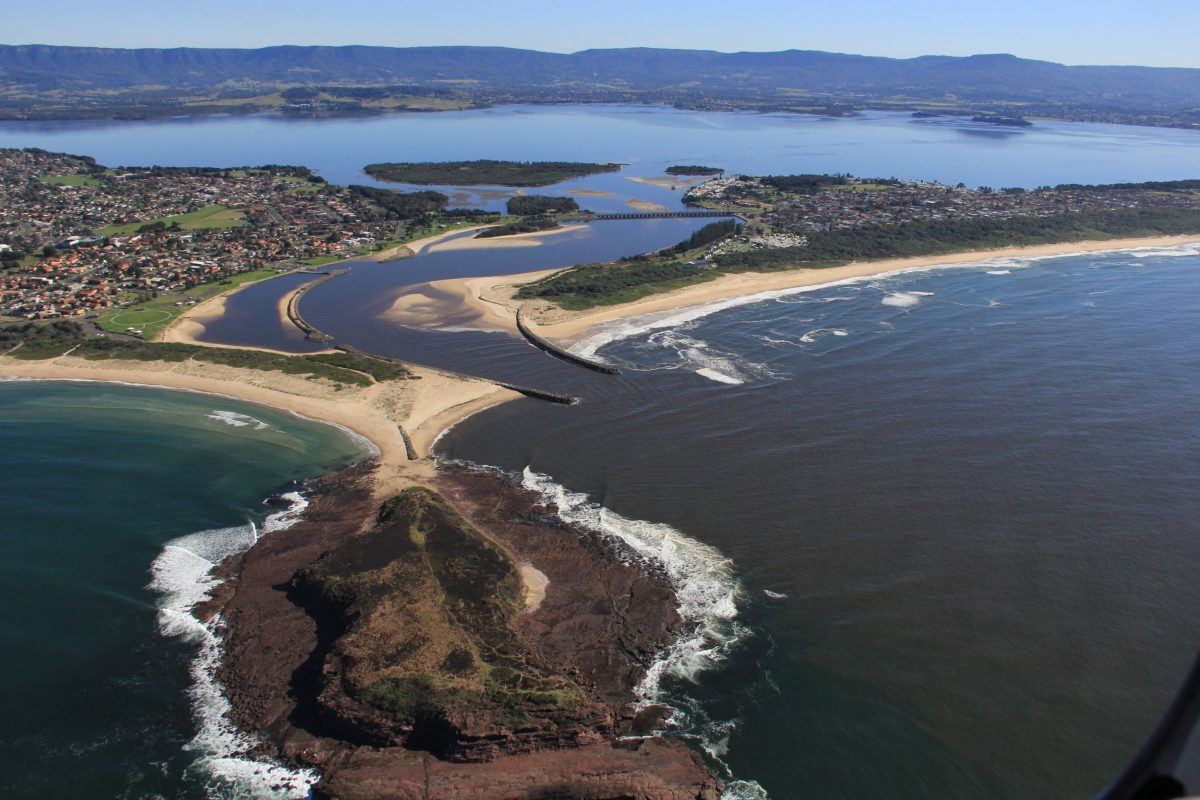
The Lake Illawarra entrance at Windang and the escarpment in the background: Discover Shellharbour.
Lake Illawarra has long been the jewel of the Illawarra, stretching from Lake Heights in the north to Albion Park Rail in the south.
Today the maintenance of 38 square kilometres of lake and 37 kilometres of shoreline is shared between Shellharbour and Wollongong city councils, with support from state agencies including the Department of Planning, Industry and Environment.
The councils are four years into a 10-year Coastal Management Program (CMP) for the lake, with 39 action items estimated to cost about $36 million over that period. Those actions focus on managing, preserving, improving, promoting and rehabilitating the lake.
Both mayors acknowledge the challenges that lie ahead, particularly safeguarding the lake from the impact of future residential developments. The Calderwood, Tullimbar, and West Dapto Urban Release Area projects are expected to add about 19,500 households over the next 50 years and increase the population in the Lake Illawarra catchment by more than 43,000.
While the most recent Estuary Health and Water Quality report card gave the lake a tick of approval – six of 11 sites were rated very good – concern is growing over increasing erosion, particularly along the Windang foreshore.
According to the CMP, erosion has “significantly undermined assets along the Windang foreshore, including the boardwalk (which has partly been removed and other sections closed off), boat ramp, power supply infrastructure, sections of footpath, lighting and other park infrastructure, pylons supporting the northern portion of Windang Bridge, areas of Aboriginal cultural significance, shorebird habitat and open public space.”
Entrance shoaling (sand build-up to form shallow banks) and sediment deposits has impacted swimming areas near Reddall Reserve, and nesting habitats for shorebirds has been affected. Studies have also found that seagrasses which provide habitat and a food supply for marine life are being lost.
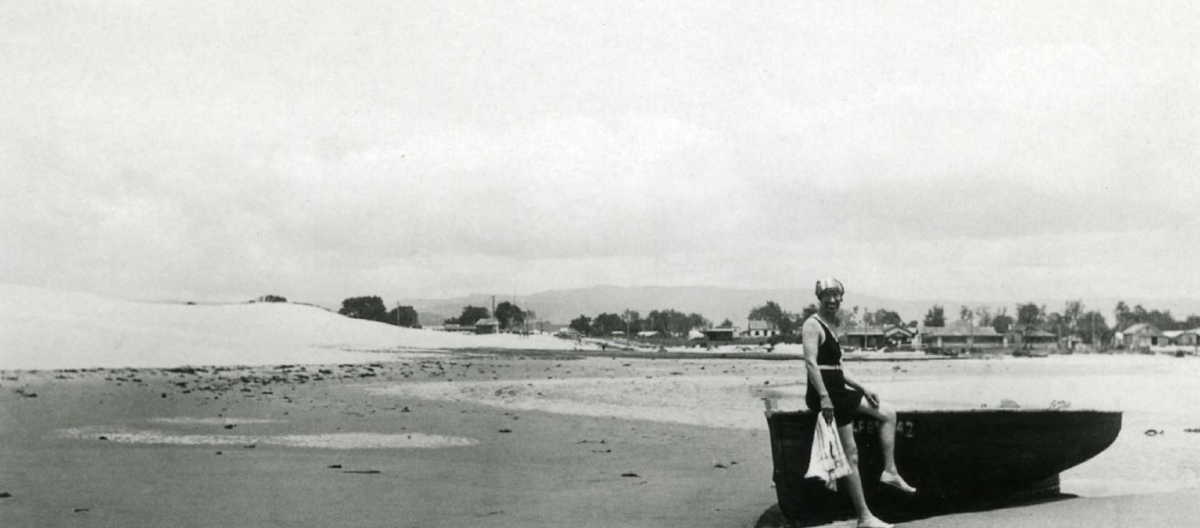
A photo from 1931 of a woman at the entrance to the lake, looking towards Reddall Parade. Photo: From the collections of Wollongong City Libraries and the Illawarra Historical Society – P18/P18855.
The Lake Illawarra Entrance Options Study – one of the CMP’s action items – is looking at how to manage the impacts and changes that have occurred around the lake entrance and foreshore since the lake was permanently opened in 2007.
Options include dune repairs and the transfer of marine sand to eroded areas, structures such as channel training walls or marine barriers, and long-term options to constrain channel flow and limit tidal velocity.
However, Wollongong Lord Mayor Gordon Bradbery is unhappy that the options study won’t come before council until the end of this year.
He has flagged a mayoral minute on the issue to be discussed at council’s next meeting on Monday 26 February.
“There’s a sense of urgency about this in that there’s erosion of the channel and more specifically, erosion on the northern side (Wollongong City Council side) affecting the playground and other assets there,” he said.
Council closed the playground when the land it sits on started to erode, posing a risk to the public.
Cr Bradbery said the study was definitely needed to address major work, but council needed to get a sense of where it was going so it could look at options in the interim to relocate assets to prevent further damage.
“We’ve inherited an issue that goes back to the days when the lake was opened,” he said.
“At the time it appeared to be the right thing to do because the lake was stagnating – I can remember the years of the smell – but those are natural processes.
“For many that was seen as a move in the right direction but its implications means we have large volumes of water moving in and out of that entrance at tidal change, and as a result there’s massive erosion.
“We’ve intervened in a natural process by building those groynes and seawalls to keep the entranceway open; now we’re dealing with the consequences.
“Human intervention will come at a cost.”
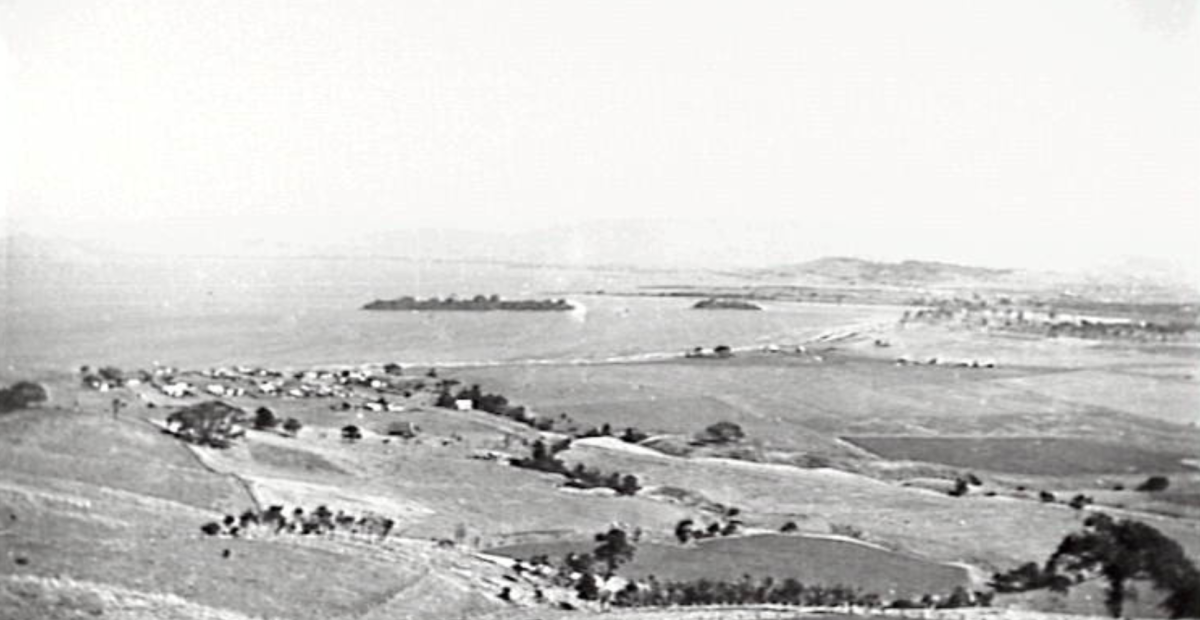
A 1948 photo of Lake Illawarra with Gooseberry Island (on the left) and Hooka Island. From the collections of Wollongong City Libraries and the Illawarra Historical Society – P02/P02173.
Cr Bradbery’s mayoral minute asks for an interim update on the options study and for that information to be made available on council’s website.
This year, the CMP Implementation Group aims to launch a dedicated online site to provide the community with regular updates on activities and events.
Shellharbour Mayor Chris Homer said in its first four years, the Lake Illawarra CMP had a significant impact on the health and quality of the lake and its foreshores.
“One highlight has been the ‘Luv the Lake’ litter prevention program, which was funded by the NSW Environment Protection Authority, delivered as a joint initiative between Wollongong City Council and Shellharbour City Council, and supported by a huge network of community and volunteer organisations,” he said.
“The program included two large-scale clean-up events, regular community clean-ups, litter education and increased signage and bins.
“It saw an estimated 1200 kilograms of litter removed from the Lake Illawarra foreshore and a 40 per cent reduction in litter at targeted sites.
“This successful collaboration won a 2023 Keep Australia Beautiful NSW Sustainable Cities Award in the Clean Communities category.”
Both councils are working on shared pathways to complete the link around the lake. Wollongong is preparing a masterplan for new sections of shared pathway connecting Primbee and Windang, Tallawarra and Haywards Bay, Haywards Bay and Shellharbour and further over Macquarie rivulet.
Shellharbour is working with consultants to plan a network of shared boardwalks and pathways around Koona Bay, while protecting fragile saltmarsh habitats.
To read the Lake Illawarra Coastal Management Program, click here.








